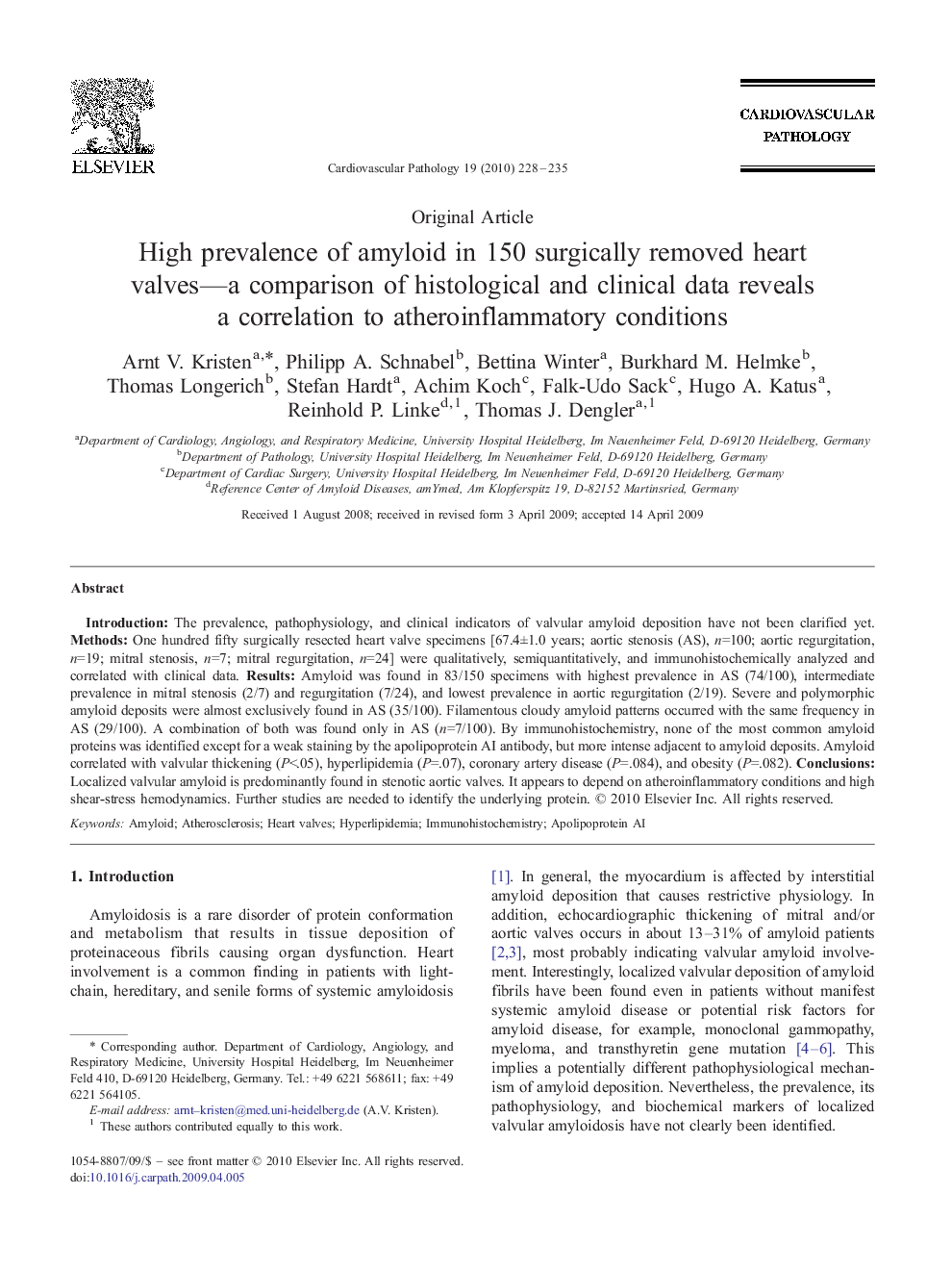| Article ID | Journal | Published Year | Pages | File Type |
|---|---|---|---|---|
| 2899120 | Cardiovascular Pathology | 2010 | 8 Pages |
IntroductionThe prevalence, pathophysiology, and clinical indicators of valvular amyloid deposition have not been clarified yet.MethodsOne hundred fifty surgically resected heart valve specimens [67.4±1.0 years; aortic stenosis (AS), n=100; aortic regurgitation, n=19; mitral stenosis, n=7; mitral regurgitation, n=24] were qualitatively, semiquantitatively, and immunohistochemically analyzed and correlated with clinical data.ResultsAmyloid was found in 83/150 specimens with highest prevalence in AS (74/100), intermediate prevalence in mitral stenosis (2/7) and regurgitation (7/24), and lowest prevalence in aortic regurgitation (2/19). Severe and polymorphic amyloid deposits were almost exclusively found in AS (35/100). Filamentous cloudy amyloid patterns occurred with the same frequency in AS (29/100). A combination of both was found only in AS (n=7/100). By immunohistochemistry, none of the most common amyloid proteins was identified except for a weak staining by the apolipoprotein AI antibody, but more intense adjacent to amyloid deposits. Amyloid correlated with valvular thickening (P<.05), hyperlipidemia (P=.07), coronary artery disease (P=.084), and obesity (P=.082).ConclusionsLocalized valvular amyloid is predominantly found in stenotic aortic valves. It appears to depend on atheroinflammatory conditions and high shear-stress hemodynamics. Further studies are needed to identify the underlying protein.
